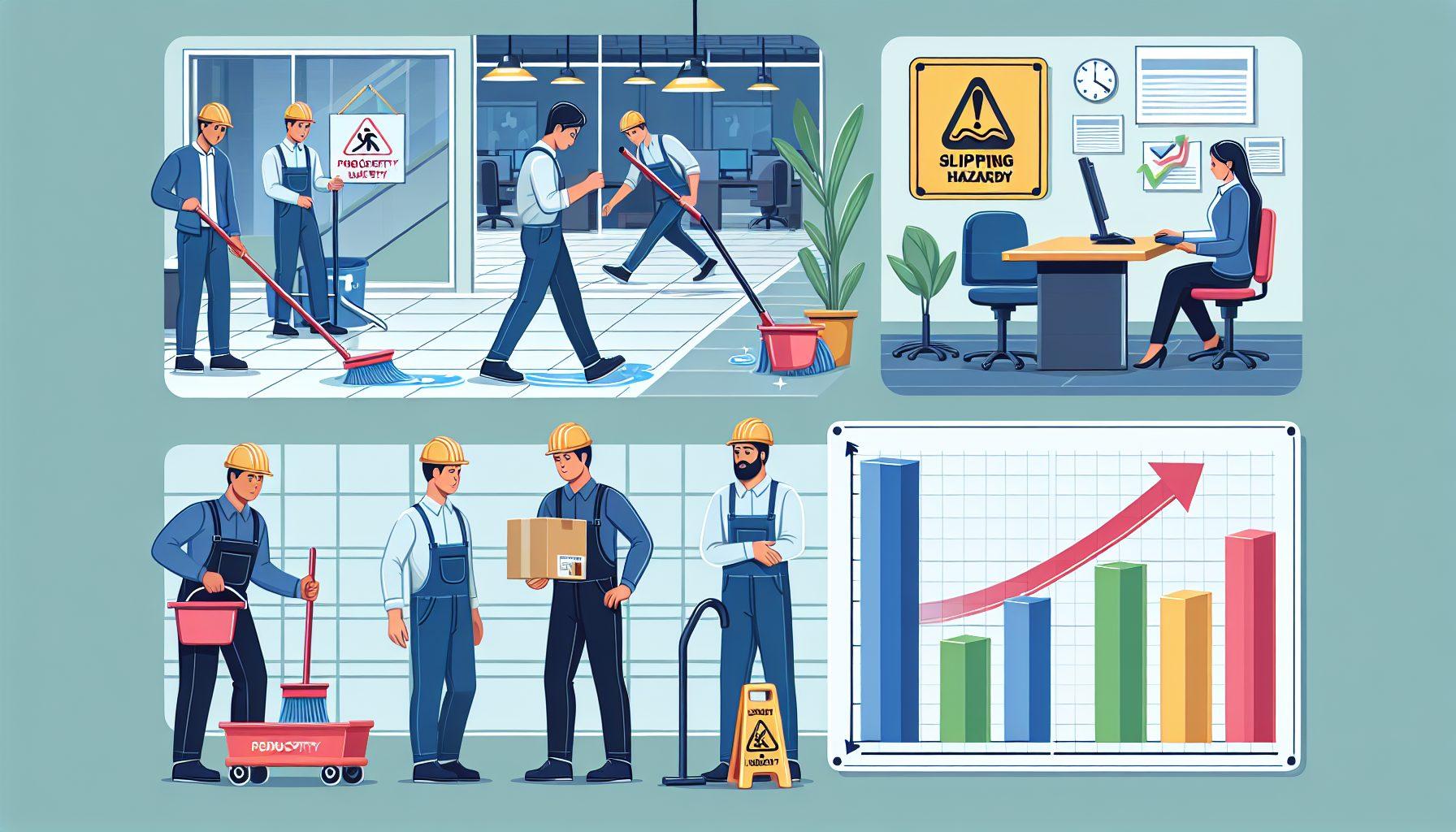Walkway safety is a vital aspect of any warehouse operation. When it comes to measuring the success of your safety efforts, metrics play a crucial role. By tracking specific metrics, you can gain valuable insights into the effectiveness of your safety initiatives and make informed decisions to improve and optimize your warehouse environment.
The Importance of Walkway Safety Metrics
Walkway safety metrics provide you with tangible data that allows you to monitor the performance of your safety measures. These metrics help you identify potential hazards, evaluate the impact of safety interventions, and measure the overall improvement in safety within your warehouse.
But why are walkway safety metrics so important? Here are a few reasons:
- Identify Potential Risks: By analyzing walkway safety metrics, you can identify the areas in your warehouse where accidents or near-misses tend to occur. This information enables you to take proactive steps to minimize these risks and prevent future incidents.
- Evaluate Safety Interventions: Metrics allow you to assess the effectiveness of safety measures that have been implemented in your warehouse. For example, if you have installed a forklift pedestrian detection system, metrics can help you determine its impact on reducing accidents and improving walkway safety.
- Measure Performance and Progress: Safety metrics provide you with quantifiable data to measure the success of your safety initiatives over time. By setting benchmarks and tracking your progress, you can monitor how well your warehouse is performing in terms of walkway safety.
Key Walkway Safety Metrics to Consider
Now that we understand the importance of walkway safety metrics, let’s take a closer look at some key metrics to consider:
- Incident Rate: This metric measures the number of incidents, including accidents and near-misses, that occur within a specific period. By tracking the incident rate, you can identify trends and patterns to help you address potential hazards and improve safety practices.
- Near-Miss Reporting: Encouraging employees to report near-miss incidents is crucial for preventing future accidents. Track the number of near-misses reported and analyze the data to identify recurring issues and areas for improvement.
- Compliance with Safety Procedures: Evaluate the level of compliance with safety procedures such as the use of personal protective equipment (PPE), adherence to traffic regulations, and safe material handling practices. This metric helps you gauge how well employees follow established safety guidelines.
- Training and Certification Completion: Keep track of the completion rate of safety training programs and certifications. This metric ensures that employees receive proper training and are knowledgeable about safety protocols.
- Response Time to Safety Incidents: Measure the response time from when a safety incident occurs to when it is reported and addressed. This metric allows you to evaluate the efficiency of your safety response system and make improvements if necessary.
Implementing Walkway Safety Metrics
Now that you are aware of the importance of walkway safety metrics and the key metrics to consider, let’s explore how you can implement them effectively:
- Define Clear Goals: Start by clearly defining your safety goals. What specific improvements do you want to achieve? This will help you determine which metrics to track and how to measure progress towards your goals.
- Collect and Monitor Data: Establish a system for collecting and monitoring safety data. This can include incident reports, near-miss forms, training records, and any other relevant information. Invest in technology and software solutions that can automate data collection and analysis.
- Regularly Analyze and Review Metrics: Set regular intervals to analyze and review your walkway safety metrics. This will help you identify patterns, trends, and areas for improvement. Use this data to make data-driven decisions to enhance safety in your warehouse.
- Communicate and Train: Share safety metrics with your team and emphasize the importance of their role in maintaining a safe workplace. Provide ongoing training and education to ensure that employees understand the significance of safety metrics and how they contribute to a safer work environment.
- Continuous Improvement: Remember that safety is an ongoing process. Use your walkway safety metrics as a tool for continuous improvement. Regularly reassess your goals, make necessary adjustments, and strive for higher levels of safety performance.
In conclusion, measuring walkway safety metrics is essential for assessing the success of your safety efforts and ensuring a safe working environment within your warehouse. By analyzing key metrics and implementing strategies for improvement, you can enhance safety, productivity, efficiency, and ultimately reduce costs associated with accidents and injuries. Take advantage of technology, encourage reporting, and promote a culture of safety to achieve optimal results in walkway safety.

